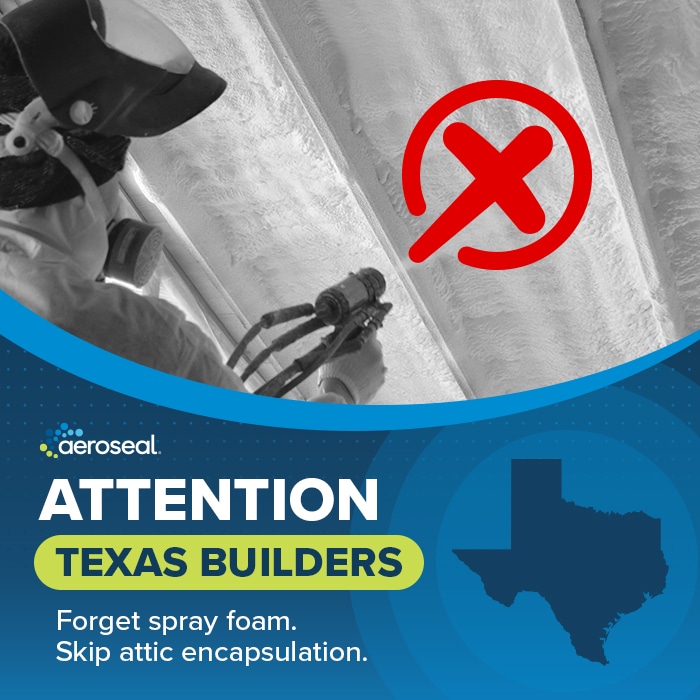Like a Fish Out of Water: Understanding Stack Effect

By Thomas Holmes
There’s an old saying that fish don’t realize they’re wet because it’s all they know. We’re the same way when it comes to thinking about the air all around us. Air is a fluid, just like water. Sure, we all feel the wind, and since the very first shelters, we’ve built our buildings to block it out. When it comes to stack effect, though, it’s a bit less obvious than the wind, and we probably don’t think much about it. If we did, we would realize that stack effect can be one of the biggest causes of comfort, health, and safety issues in buildings, both large and small, and one of the biggest drivers of costly energy waste.
What is Stack Effect?
Because air is a fluid like water, it expands as it gets warmer and contracts as it gets colder. Anyone who’s gone swimming in a lake has felt that spot where the water temperature at the bottom gets suddenly colder (they call it the thermocline). That colder water is denser than the water above it, causing it to sink below the warmer layer. Air does the same thing, floating upward as it gets warmer and sinking downward as it gets colder. That’s why in the winter, the cold drafts always feel like they are at our feet—because that’s where the colder, denser air gets in.
In the summer, the stack effect process works in reverse. The cooler air inside leaks out at the bottom of the building, and the warmer air gets pulled in at the top.
How Stack Effect Impacts Building Health and Energy Efficiency
This change in air density means that the warmer the air is, the more moisture it can hold. That is why it feels so dry in the winter and so humid in the summer. As cold air warms up, it sucks up moisture like a sponge, making our skin (and furniture) dry out and crack. It’s also why the moisture in hot, humid summer air that gets inside can condense out, creating conditions for mold growth.
Either way, the greater the temperature difference, the faster the air moves through the building. Since winter outside temperature differences are generally greater than in summer, compared to comfortable indoor temperatures, stack effect is more of a factor in the winter than in the summer in terms of energy waste.
Effects of Stack Effect:
-
Pressure Differences: Strong negative pressure at the lobby, slamming interior doors, migrating smells.
-
Uneven Flow of Air and Temperature Differences: High-rise buildings affected by stack effect often have uncomfortable temperature fluctuations. Hot air accumulates on upper floors, and cold drafts shift to the ground level and lower floors.
-
High Energy Costs: As conditioned air escapes due to stack effect, HVAC systems have to work harder to maintain temperature, leading to higher energy consumption and costs. In places like New York City, uncontrolled air leakage can cost hundreds of thousands of dollars a year.
How Air Leakage Amplifies Stack Effect Problems
How big a deal is air leakage? EnergyStar estimates that air leakage and improperly installed insulation can waste as much as 20% of the energy used to heat and cool a single-family home. Beyond that, those air leaks can create indoor air quality problems and even shorten the life of the building itself.
The importance of an energy-efficient house is so great that many building codes now require new homes to meet strict energy codes and standards. Even some mortgage lenders require specific energy efficiency standards for the new construction homes they finance. Aeroseal’s Envelope Solution, in conjunction with our Aeroseal Duct Solution, have become two of the most proven and reliable ways for new home builders to meet these new standards and are seeing wide adoption all across the US and Canada.
The Taller the Stack, the Greater the Effect
Another big factor with stack effect is the height of the building. As the air flows, it effectively picks up speed. One reason that chimneys are built to be well above the roofline of a building is to give the heated flue gases a good running start so that the wind has less chance of blowing down from the top and creating a backdraft.
If you think about stack effect’s impact in single-family houses, its effect on high-rises is multiplied many times over. Elevators, stairwells, and plumbing risers create stack effect expressways, sending air rocketing up through the building, creating air pressures comparable to 20 or even 30 miles per hour at the tops and bottoms of these buildings. Ever wonder why most skyscrapers have revolving doors in the lobby? They were invented specifically to deal with the huge stack effect that most tall buildings experience.
How to Combat Stack Effect in Large Buildings
One way to combat stack effect in big buildings is through compartmentalization. Break the vertical stack, and you reduce its effect. Aeroseal’s Envelope Solution is gaining wide use in new construction multifamily buildings because it can achieve compartmentalization more cost-effectively and consistently than traditional methods. Beyond the energy benefits, compartmentalization also helps contain cooking odors and can even help with pest control.
Big buildings also generally require mechanical ventilation to ensure good indoor air quality and meet building codes for healthy buildings. Our Aeroseal Duct Solution is the method of choice for many new construction high-rises, as well as the leading solution for improving the comfort, safety, and energy performance of existing buildings.
Contact Us
Contact Aeroseal today to learn more about our advanced air sealing solutions.







